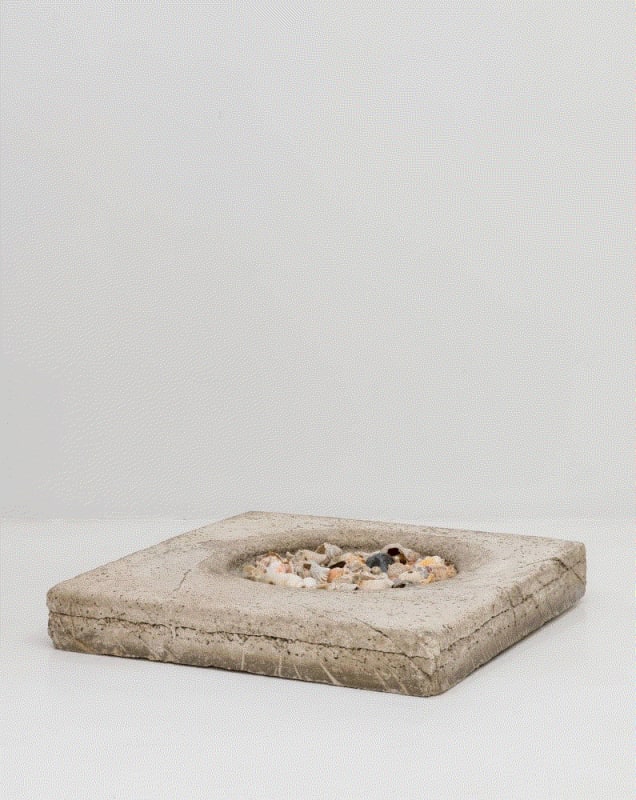Amelia Amorim Toledo (São Paulo, SP, 1926 - idem, 2017). Sculptor, painter, draftswoman, designer. Attended the studio of Anita Malfatti (1889-1964), in São Paulo, in the late 1930s. Between 1943 and 1947, she studied with Yoshiya Takaoka (1909-1978) and, in 1948, with Waldemar da Costa (1904-1982). That same year she worked with project design at the office of architect Vilanova Artigas (1915-1985). In 1958, she attended the London County Council Central School of Arts and Crafts. Back in Brazil, in 1960, she studied etching with João Luís Oliveira Chaves (1924) at Estúdio/Gravura. In 1964 she earned a master's degree from the Universidade de Brasília (UNB). Since the mid-1960s, she has taught at the School of Architecture and Urbanism at Universidade Mackenzie and at Fundação Armando Álvares Penteado (Faap), in São Paulo, and at the Escola Superior de Desenho Industrial (Esdi), in Rio de Janeiro. The artist also dedicates herself to oil and watercolor painting and jewelry design. She creates works for public spaces, such as the chromatic project, 1996/1998, for the Arcoverde subway station in Rio de Janeiro. In 1999, a retrospective exhibition of her work was held at the Galeria do Sesi in São Paulo, and in 2004, the book Amélia Toledo: As Naturezas do Artifício by Agnaldo Farias was published.
Analysis
In the early 1960s, Amelia Toledo starts from the study of the sculptural space with constructive roots, and performs curvatures in regular geometric elements. She also explores the possibilities offered by the mirrored surface of stainless steel. Through the game of reflections, the multiplication of surfaces is enhanced, and the space unfolds in a game of resonances, approaching architecture. In Situação Tendendo ao Infinito (1971), Toledo relies on geometry, using a cube of crystalline forms that is divided into eight smaller cubes and so on. The work is an invitation to manipulation - it can be disassembled and reassembled in various configurations.
Amelia Toledo presents, since the 1970's, a production based on nature's forms. She collects materials such as shells and stones, over which she acts minimally. The landscape is also a constant, exemplified in works such as Fatias de Horizonte (1996), in which screens with steel plates recreate the visual illusion of the horizon line, involving issues such as continuity and discontinuity. The experimental character, the use of a wide range of materials - both natural and industrial - and the interest in recreating the landscape are, therefore, recurrent in the artist's work, which is also dedicated to oil and watercolor painting, in works that are generally monochromatic, with subtle luminous vibrations.
AMELIA Toledo. In: ENCICLOPÉDIA Itaú Cultural de Arte e Cultura Brasileiras. São Paulo: Itaú Cultural, 2021. Available at: <http://enciclopedia.itaucultural.org.br/pessoa9129/amelia-toledo>. Accessed on: June 25, 2021. Encyclopedia entry. ISBN: 978-85-7979-060-7

